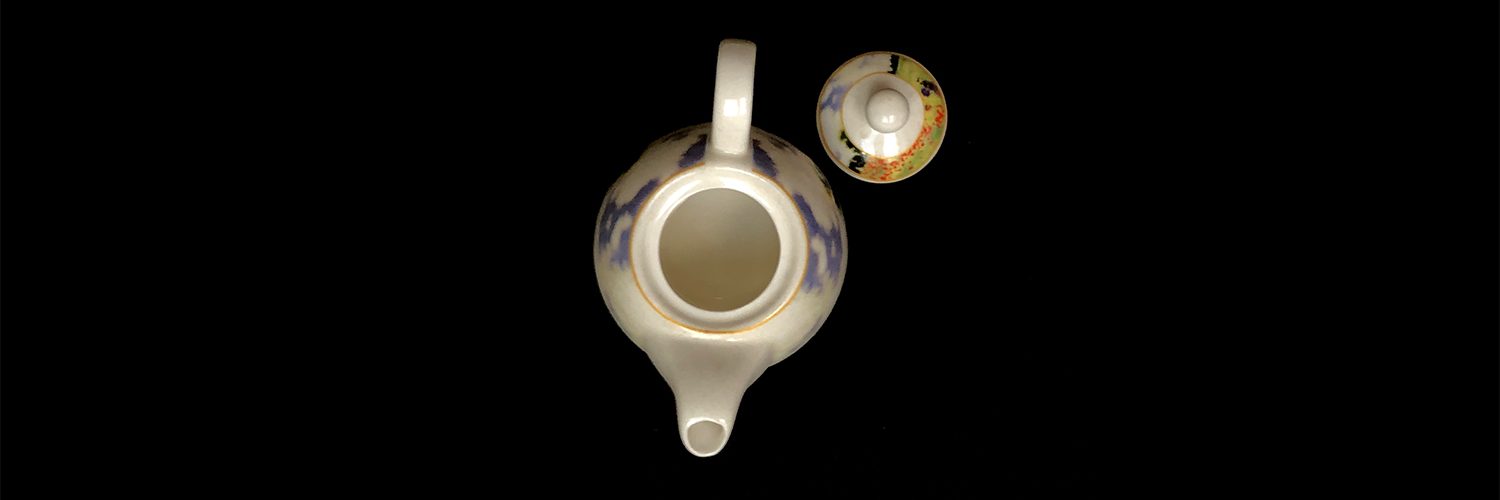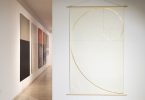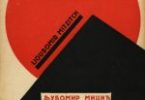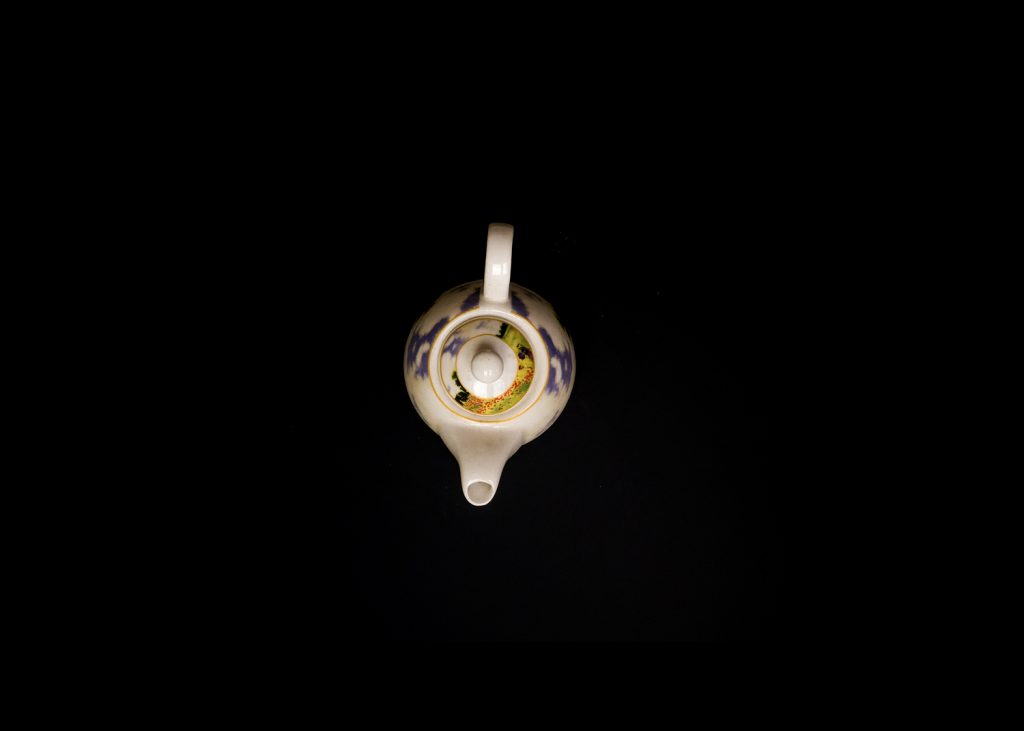
U duhu Duchampovog stava; I don’t belive in Art, I belive in Artists, rekao bih da je današnji umetnik pre svega nomadska singularnost koja se na različite načine povezuje sa drugim čvorištima i mrežama. Umetnik prestaje da bude subjekt u klasičnom smislu i nije više pozicioniran unutar neke stabilne scene sa relativno jasno određenim granicama. Svi “veliki” umetnici iz istorije umetnosti bili su više ili manje “dvorski slikari”, a to znači, da su bili u funkciji reprezentacije moći, dakle neprekidno su gravitirali oko različitih centara moći (dvor, crkva, lokalni moćnik, partija i sl.) i naravno njihova produkcija je zavisila od toga. Sa druge strane, do pada berlinskog zida, živeli smo u svetu hladnoratovske civilizacije, kad je svet postao velika pozornica sa dve dominantne scene koje su bile u neprekidnom ideološkom sukobu, na ivici atomske kataklizme poput one iz Kubrickovog Dr. Strangelovea. U takvoj konstelaciji umetnik je morao da se dovija, nekad da bude državni umetnik, a nekad disident; unutar hladnoratovske igre umetnik je bio subjekt i znalo se njegovo mesto na sceni. Na početku XXI veka umetnik postaje singularnost, a svet se iz pozornice, transformiše u klastere različitih mreža tako da umetnik sada treba da pronađe sasvim nove, produktivne načine povezivanja sa tim kompleksnim svetom.
Kad se govori o tome, da je umetnik nomad, to ne znači, da se on neprekidno seli i putuje, nego je – kako bi Deleuze to rekao – neka vrsta intelektualnog nomada. Umetnik više ne pristaje da ostane zatvoren unutar vlastitog medija, u duhu greenbergovski shvaćenog “čistog” medija, već postaje nomad koji se kreće kroz različite medije i okruženja (environments) kako bi fenomene svog vremena osvetlio na drugačije načine. U tom smislu biti nomad pre svega znači neprekidno istraživanje i mapiranje različitih konstelacija, iz kojih tako nastaje savremena umetnička produkcija. Ovo je zanimljivo u teorijskom smislu, pošto govorimo o promenjivom odnosu sila iz čije stabilizacije nastaje jedna istorijska formacija, pa samim tim i ono vidljivo i izrecivo koje je inherentno toj epohi. Dakle, suočavamo se sasvim novom situacijom gde je zadatak umetnika da učini vidljivim nevidljive sile, koje oblikuju našu dominantnu realnost. U tom smislu umetnik još od vremena istorijskih avangardi počinje da napušta ono privilegovano mesto koje je imao u radnijim epohama ili čak u hladnoratovskoj civilizaciji, a koje je prevashodno bilo u funkciji reprezentacije moći. Savremeni umetnik, naprotiv, eksperimentiše sa realnim i postaje neka vrsta inovativnog i provokativnog istraživača najrazličitijih fenomena vlastitog vremena, nastojeći da pokaže kako su oni postali konstitutivni momenti dominantne realnosti.
Umetnik treba da učini vidljivim odnos sila unutar nekog polja na koji neprekidno nastoje da utiču različiti dispozitivi kako bi na taj način odredili politike vidljivosti unutar jedne istorijske formacije. Zbog toga umetnik na početku 21. prerasta u singularnost, odnosno postaje kvazi-subjekt, kako bi to rekao M. Serres, koji svojim intervencijama čini vidljim različita povezivanja unutar savremenog kompleksnog umreženog sveta. Takva transformacija može da se dogoditi samo ukoliko promeni svoju poziciju i postane nomadska singularnost; u suprotnom ukoliko ostane tradicionalni subjekt umetnik, želeo to ili ne, on ostaje u funkciji kapitala. Sa jedne strane imamo proces koji bi se, sledeći Hegelove uvide, mogao nazvati marginalizacijom umetnosti, kada ona, zajedno sa religijom, postaje manje važna ljudima savremenog doba. Na drugoj strani, kao odgovor na ovu marginalizaciju, trebalo bi da dođe do radikalne promena mesta umetnika, samog razumevanja produkcije i čitavog sistema umetnosti. Tu se otvora prostor za nastajanje nomadske umetnosti.
Iz ugla nomada, moglo bi se reći da je čitava moderna nastojanje da se dođe do površine, zbog toga što je Evropa, pa tako i čitava zapadna civilizacija, opsednuta transcendencijom ili kako bi rekli Deleuze i Gattari „transcendencija je karakteristično europska bolest“. Kad pričamo o sceni, pretpostavljamo neku vertikalu, hijerarhiju i transcedenciju; neko stanje stvari, subjekte i unapred određene uloge koje oni imaju. Čak i kada tragamo za nekim surogatima scene, mi još uvek nismo došli do površine, do nehijerarhizovanih vertikalnih čvorišta različitih intenziteta. Zapad je prosto opsednut vertikalom, strukturom drveta, idejom da treba doći do korena, gde dominira umetnost-arheologija koja sve vreme traga za izvorima, korenima, suštinom, bitkom. U tako prećutno uspostavljenoj hijerarhiji prihvatimo asimetriju koja proizlazi iz odnosa moći kao nešto “normalno” ili čak “prirodno”. U trenutku kada su umetnici destabilizovali i napustili scenu, kako bi ocrtali promenjene odnose sila iz kojih nastaje moć, pojavljuje se nomadska umetnost-kartografisanja, gde se mapiraju različite vrste i načini interakcija i povezivanja unutar čitavog polja.
Kada umetnik postaje nomad, kreće se u najrazličitijim registrima – koristi različite medije i strategije prezentacije svog rada, ne vezujući se za tradicionalne institucije unutar dispozitiva umetnosti. Dakle, imamo singularnost koja se povezuje sa heterogenim čvorištima i mrežama, tako da umetnik više nije subjekt čije su mesto i uloga unapred određeni dispozitivom umetnosti, već njegova produkcija čini vidljivim različite segmente dominantne realnosti. Sama produkcija je mapiranje tog savremenog, atonalnog sveta kako bi rekao Badiou, na način kojim bi se otvorila mogućnost da se i druga mapiranja ona koja dolaze iz nauke i filozofije postave jedna preko drugih. Tada bismo mogli da dođemo do neke aproksimacije o tome šta se dešava u svetu.
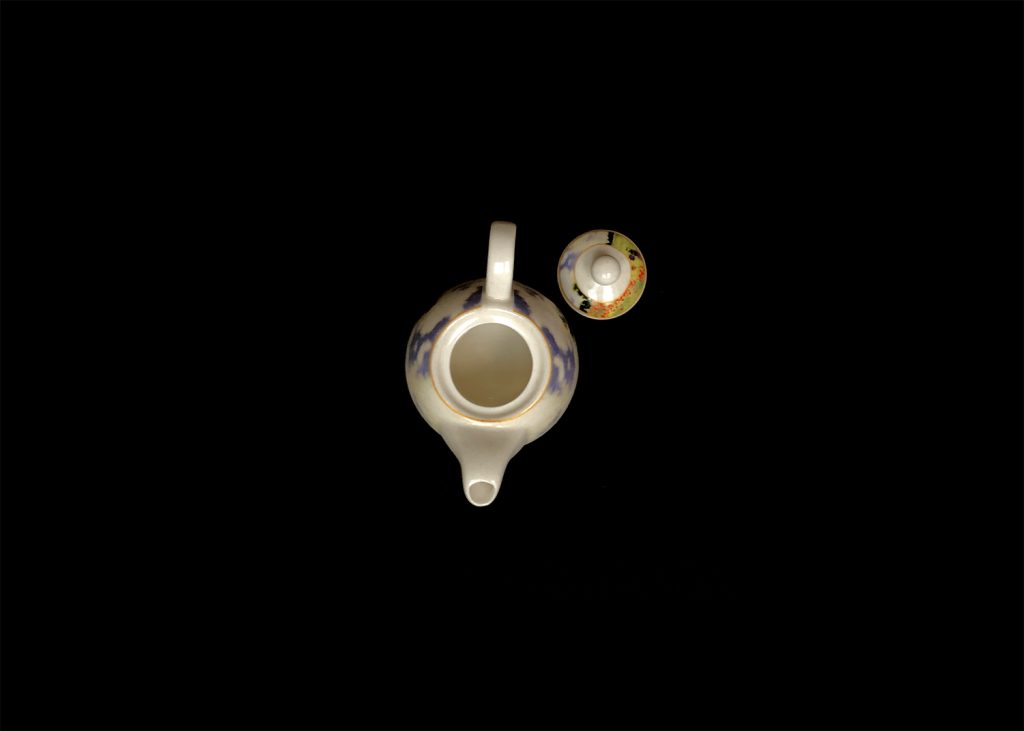
Kada je 2016 Oxford Dictionary post-istinu proglasio za reč godine to je značilo da sve češće nastaju okolnosti u kojima objektivne činjenice imaju sve manje uticaja na oblikovanje javnog mnjenja nego što to imaju pozivanja na emocije ili personalno verovanje. Sa post-istinom, post-činjenicama, post-demokratijom, post-politikom i sl. „post“ ne samo što dobija drugačije značenje već se istovremeno stvaraju uslovi za mogućnost preklapanja različitih kartografisanja, kako onih koja dolaze iz nauke tako i onih koja dolaze iz filozofije i umetnosti.
Upravo u vremenu politike post-istine (Post-truth politics) treba se zapitati: za kakvom istinom, na primer traga nauka, kada je manje više poznato ko su naručioci, koje moćne korporacije, institucije, ili pojedinci stoje iza različitih istraživanja. Nažalost čini se da nije ništa bolje niti sa tržištem umetnosti ili u akademskoj zajednici. Tako dolazimo do paradoksa da ono šta nam omogućavaju tehnologije XXI veka, dovodi do zatvaranja i nastajanja delezovskog “društva kontrole” umesto da se otvori prostor za “demokratiju u realnom vremenu”. Ponovo upadamo u asimetrični odnos, gde smo zahvaljujući mogućnostima novih tehnologija “kontrolisani građani” umesto da budemo oni koji mogu da u svakom trenutku imaju uvid u to šta rade naši demokratski izabrani prestavnici vlasti. Umetnost, za koju smo očekivali da će se zahvaljujući novim tehnologijama u umreženom i kompleksnom svetu “demokratizovati”, počinje da se zatvara tako da svetom umetnosti dominiraju različiti klasteri od „blockbuster“ umetnosti, korporativne umetnosti, umetnosti bijenala i umetničkih sajmova do muzejske umetnost. Ono što što je od vremena avangardi bila provokacija koja tera na mišljenje, danas je potpuno marginalizovano. U takvoj konstelaciji, nije u pitanju kraj umetnosti, već njena radikalna marginalizacija, čime se otvara prostor za nastajanje nomadske umetnosti koja se poigrava sa ovakvim zatvaranjima i kontrolom koju sprovodi dispozitiv umetnosti.
Danas postoje “zvezde” koje svoje radove prodaju za milione ali je njihov broj veoma mali, i što je vrlo važno, udovoljavajući zakonima tržišta oni su već davno prestali da budu inovativni, provokativni ili da na bilo koji način korespondiraju sa savremenošću. Tako dospevamo u zanimljivu situaciji gde na jednoj strani imamo umetnike koji eksperimentišu sa realnim i postaju nomadske singularnost, dok na drugoj, imamo one koji su u funkciji estetizacije kapitala i koji ostaju subjekti. Sistem umetnosti pretpostavlja linearno kretanje gde se unutar neke epohe pojavljuju “veliki” umetnici i “čuvena” remek dela – cela naša istorija umetnosti je istorija remek dela. Mada su, kako u jednom intervjuu primećuje Marcel Duchamp, naši muzeji zapravo prepuni osrednjih dela. Zbog toga je izlazak iz klasičnog uokvirenja — napuštanje hijerarhije i transcedencije, dominacije remek dela i “genijalnih” umetnika kao pretpostavke za funkcionisanje sistema umetnosti — neophodan da bi se stvorili uslovi za nastajanje umetnika kao nomadske singularnosti. Zato je važno okrenuti se površini i kartografisanju, kako bi se izbegla moć aproprijacije dispozitiva umetnosti.
Sa ubrzanjem čitavog sistema sve više upadamo u semantičku prazninu obzirom da se stvarnost mnogo brže menja nego što jezik uspeva da prati ove promene, i zbog toga koristimo neku vrstu zombi pojmova. Savremene političke rasprave gotovo neprimetno skliznu u klasičnu hladnoratovsku retoriku u nastojanju da se objasne neki fenomeni, od uspona desnice do rasta nejednakosti. Tako su Rusi hakovali izbore u SAD pa otuda pobeda populističkog kandidata ili Kinezi svojom dominacijom u proizvodnji hardvera mogu da špijuniraju čitav svet i tako dalje. U jednom momentu počinjete da shvatate da još uvek nemamo kritičke alate za razumevanje multipolarnog, umreženog i kompleksnog sveta koji nastaje. To je razlog zbog čega koristimo zombi pojmove koji su ni živi ni mrtavi koji zvuče realno a zapravo malo toga ili najčešće ništa ne objašnjavaju. U tom smislu umetnici moraju da budu emfatički svesni upravo ove semantičke praznine koja je efekat akceleracije čitavog sistema. Kao singularnost, umetnik se ne pozicionira: ne zanima ga scena, ne zanima ga koji je dominantni tip produkcije, već ono što radi pre svega zavisi od problema koji nastoji da učini vidljivim, dakle pre svega od toga koja pitanja postavlja. Upravo nomadska kretenja omogućavaju umetniku da ta pitanja u jednom slučaju formuliše preko videa, u drugom putem performansa, instalacije ili fotografije i sl. Umetnik je danas konstitutivni momenat jednog sklopa u kojem je više aktera: posmatrač, kritičar, institucija, mecena, … umetnik. Možemo li pretpostaviti da i u idealnim okolnostima umetnik, koji ima „siromašne“ strategije i minimalne pristupe, ima isto tako minimalne zahteve u odnosu na dispozitiv umetnosti? Ne baš, jer često puta minimalni pomaci mogu da destabilizuju sistem ili da učine vidljivim njegove unutrašnje granice. Može se dogoditi da neki umetnik pokaže koliko su neki problemi fiktivni, kako su neka pitanja pogrešno postavljena ili irelevantna u datom trenutku.
Walter Benjamin, na samom početku eseja o tehničkoj reprodukciji napominje da nekontrolisana primena starih pojmova — kao što su stvaralaštvo, genijalnost, večne vrednosti, tajna i sl. — vodi do prerade činjeničnog materijala u fašističkom smislu. Zbog toga je po Benjaminovom sudu u teoriju umetnosti, a danas bismo mogli reći ne samo umetnosti, neophodno uvesti nove pojmove koji su potpuno neupotrebljivi za ciljeve fašizma. Razloge za ovakav pristup pre svega treba tražiti u tome da fašizam teži estetizaciji političkog života, a ta estetizacija politike kulminira u jednoj tački, a to je rat. Na početku XXI sa nastankom digitalnog kapitalizma estetizacija politike prerasta u estetizciju kapitala. Benjaminovi pojmovi, koji su bili u funkciji istorijskog fašizma, danas su zapravo zombi pojmovi i aktuelizuju se ili hiberniraju u zavisnosti od odnosa sila. Svedoci smo nastajanja novog fašizma, o kojem govore Deleuze ili Badiou, a koji se zapravo sprovodi u ime naše sigurnosti, u ime reda ili izvesnosti, u ime naših zapadnih vrednosti … i sl. Nova forma fašizma zasniva se na rasizmu bez rase, na tome da svuda mogu nastati čvorišta mikro-fašizma, unutar različitih zajednica koje, težeći da sebi osiguraju privilegovano mesto, u igru vraćaju arborescentne i hijerarhijske strukture. U tom smislu umetnicima više nije potrebno privilegovano mesto. Različite, uglavnom ekstremne, nazadne i reaktivne političke snage, i dalje se bore za privilegovano mesto mada takav pristup sve manje pripada ovom vremenu, zbog toga što se moć sa scene izmešta u mreže. Ako posmatramo iz tog ugla možemo videti da estetizacija kapitala zamagljuje jednoznačno i jasno lociranje čvorišta moći. To su sada hibridna čvorišta, jedan kompleksni i nestabilni sklop preseka različitih linija – investicionih, političkih, vojnih, informacijskih, biohemijskih i sl. – koja postaju tačke distribucije moći. Umreženoj moći više ne treba reprezentacija u klasičnom smislu. Linija koja se razvijala od dvorskih umetnika do hladnoratovske neoavantgarde, imala je jasne elemente Benjaminove estetizacije političke. Moć nema više potrebu za reprezentacijom jer razvija sasvim druge strategije, odnosno, umrežena moć se potpuno drugačije strukturira unutar različitih klastera. Zato se kao efekat estetizacije kapitala, pojavljuje proces marginalizacije umetnosti, jer umetnost više nije “the thinking eye” kako bi to rekao Klee, već samo jedna od mogućih investicija. Estetizacija kapitala zapravo vodi u “banalnost banalnosti zla” kao što Benksy, u nazivu jednog svog rada, “citira” Hanu Arent.
Kapital dominira dispozitivom umetnosti pa je funkcionisanje umetničkih institucija, poput Modernih muzeja, Bijenala i sl. nezamislivo izvan finansijskih mreža. Budućnost institucija je daleko od klasičnog shvatanja centara moći, kao što je to nekada bio Paris ili New York. Nekadašnji centri moći, – koji su bili neka vrsta “defaulta“, za svakog provincijalnog umetnika koji mašta o “uspehu” – danas su tek neka od čvorišta unutar dispozitiva umetnosti. U tom smislu budućnost institucija nije više izvesna kao što je to nekada bio slučaj, jer institucije savremene umetnosti postoje u zavisnosti od intenziteta događaja koji produkuju. U digitalnom kapitalizmu nije više presudno gde su te institucije, u centru ili na periferiji, jedino je važan intenzitet događaja koji produkuju. S marginalizacijom umetnosti, ali i humanističkih nauka uopšte, započinje doba apsolutne dominacije nauke, čija usmerenja određuje kapital koji ne samo što počinje vidljivo da menja svet, već isto tako kolonizuje budućnost. Na drugoj strani preti nam mogućnost irevirzibilnog globalnog incidenta koji bi mogao dovesti čak do implozije čitave civilizacije. U tom smislu se suočavamo ne samo sa nizom novih hibridnih fenomena, tehnologija i sl. već isto tako i sa zamućivanjem ili brisanjem granica, koje su nam se do skora činile neupitnim, na primer između biologije i informatike. Danas umetnik nije više klasičan humanistički subjekt, koji sa neke izmeštene meta-pozicije posmatra svet, naprotiv, on je među prvima shvatio da ulazimo u doba posthumanizma i veštačke inteligencije. Kao singularnost koja se kreće u različitim mrežama, savremeni umetnik je nomad koji kao da otelovljuje san istorijskih avangardi, obzirom da za njega više nema jasne granice između umetnosti i života.
Nomadic singularity – Artist of the XXI century
In the spirit of Duchamp’s attitude, I don’t believe in Art; I believe in Artists; it can be said that today’s artist is primarily a nomadic singularity that connects in various ways with other hubs and networks. The artist ceases to be a subject in the classical sense and is no longer positioned within a stable scene with relatively clearly defined boundaries. All the “great” artists from the history of art were more or less “court painters,” which means that they were in the function of representation of power. Therefore, they constantly gravitated around various centers of power (court, church, local strongman, party, etc.), and their production depended on it. On the other hand, until the fall of the Berlin Wall, we lived in a world of Cold War civilization, when the world became a big stage with two dominant scenes that were in constant ideological conflict, on the verge of an atomic cataclysm-like that of Kubrick’s Dr. Strangelove. In such a constellation, the artist had to convey himself, sometimes as a state artist and sometimes as a dissident. The artist was the subject of the Cold War game, and his place on the stage was known. At the beginning of the 21st century, the artist becomes a singularity, and the world is transformed from a stage into clusters of different networks. Hence, the artist must now find new, productive ways to connect with this complex world.
When it comes to saying that the artist is a nomad, it does not mean that he is constantly moving and traveling, but – as Deleuze would put it – a kind of intellectual nomade. The artist no longer agrees to remain enclosed within his medium, in the spirit of the Greenberg-understood “pure” medium but becomes a nomad who moves through different media and environments to illuminate the phenomena of his time in different ways. In this sense, being a nomad primarily means continuously exploring and mapping different constellations from which contemporary artistic production arises. This is interesting in the theoretical sense since we are talking about the changing relationship of forces whose stabilization raises a historical formation and, therefore, the visible and sayable that is inherent in that epoch. So, we are faced with a completely new situation where the task of the artist is to make visible the invisible forces that shape our dominant reality. In this sense, since the time of the historical avant-gardes, the artist has begun to abandon that privileged place he held in the working epochs or even in the Cold War civilization, which was primarily in the function of representation of power. On the contrary, the contemporary artist experiments with the real and becomes an innovative and provocative researcher of various phenomena of his own time, trying to show how they became constituent moments of dominant reality.
The artist should make visible the relation of forces within a field constantly influenced by different apparatus (dispositive) to determine the policies of visibility within a historical formation. Therefore, at the beginning of the 21st, the artist grows into a singularity, i.e., becomes a quasi-subject, as Michel Serres would say, who, with his interventions, makes different connections within the contemporary complex networked world more visible. Such a transformation can occur only if it changes its position and becomes a nomadic singularity; otherwise, if he remains a traditional subject artist, whether he likes it or not, he remains in the function of capital. On the one hand, we have a process that, following Hegel’s insights, could be called the marginalization of art when it, along with religion, becomes less important to the people of modern times. On the other hand, in response to this marginalization, there should be a radical change in the place of the artist, the very understanding of production, and the entire art system. This is where the space for nomadic art is opened.
From the point of view of the nomads, one could say that the whole modern effort to reach the surface is because Europe, and so all of Western civilization, is obsessed with transcendence or as Deleuze and Guattari would say, “transcendence is characteristically a European disease”. When we talk about the scene, we assume some vertical, hierarchy, and transcendence, some state of affairs, subjects, and predetermined roles that they play. Even ware looking for some surrogates of the scene, we still have not reached the surface of non-hierarchized vertical hubs of varying intensity. The West is simply obsessed with the vertical structure of the tree, the idea that it needs to get to the roots, where art-archaeology dominates, which is constantly searching for sources, roots, essence, and Being (Sein). In such a tacitly established hierarchy, let us accept the asymmetry that arises from power relations as something “normal” or even “natural.” At the moment when the artists have destabilized and left the scene, to outline the changed relations of forces from which power arises, a nomadic art of cartography appears, where different types and ways of interacting and connecting within the entire field are mapped.
When an artist becomes a nomad, he moves in various registers – he uses different media and strategies for presenting his work, not attaching himself to traditional institutions within the Apparatus (Dispositif) of art. Thus, we have a singularity that connects with heterogeneous hubs and networks so that the artist is no longer a subject whose place and role are predetermined by the dispositive of art. Still, his production makes visible different segments of the dominant reality. The production itself is the mapping of that contemporary, atonal world, as Badiou would say, in a way that would open up the possibility of other mappings, those coming from science and philosophy placed on top of each other. Then, we can come up with some approximation of what is happening worldwide.
When the 2016 Oxford Dictionary declared post-truth the word of the year, it meant that circumstances arose more and more often in which objective facts have less and less influence on shaping public opinion than references to emotions or personal beliefs. With post-truth, post-facts, post-democracy, post-politics, etc. “fasting” not only acquires a different meaning but at the same time, conditions are created for the possibility of overlapping different cartography, both those that come from science and those that come from philosophy and art.
It is precisely in the time of post-truth politics that one should ask: what kind of truth, for example, is science searching for when it is more or less known who the contractors are and which powerful corporations, institutions, or individuals are behind various research. Unfortunately, it doesn’t seem any better either with the art market or academia. Thus, we come to the paradox that what the technologies of the 21st century enable us to do is close (techno-feudalism) and create a “society of control” (Deleuze) instead of opening up space for “real-time democracy.” We are again intruding into an asymmetric relationship, where thanks to the possibilities of new technologies, we are “controlled citizens” instead of being the ones who can at any moment have insight into what our democratically elected representatives of government are doing. Art, which we expected to be “democratized” thanks to new technologies in a networked and complex world, is beginning to close so that the world of art is dominated by various clusters from “blockbuster” art, corporate art, biennale art, art fairs to museum art. What has been a provocation for thinking since the time of the avant-garde is now completely marginalized. In such a constellation, it is not the end of art but its radical marginalization. It opens the space for the emergence of nomadic art that plays with such closures and control exercised by the dispositive of art.
Today, there are “stars” who sell their works for millions. Still, their number is very small, and importantly, by meeting the laws of the market, they have long ceased to be innovative, provocative, or in any way correspond to modernity. Thus, we find ourselves in an interesting situation where, on the one hand, we have artists who experiment with the real and become nomadic singularities, while on the other, we have those who are in the function of the aestheticization of capital and who remain subjects. The art system assumes linear movement where “great” artists and “famous” masterpieces appear within an epoch – our entire history of art is the history of masterpieces. Although, as Marcel Duchamp notes in an interview, our museums are full of mediocre works. Therefore, an exit from classical framing — abandoning hierarchy and transcendence, the domination of masterpieces, and “ingenious” artists as a prerequisite for the functioning of the art system — is necessary to create the conditions for the emergence of artists as a nomadic singularity. That is why it is important to turn to the surface and cartography to avoid the power of appropriation of the Apparatus (Dispositif) of art.
With the acceleration of the whole system, we are increasingly plunging into a semantic void as reality changes much faster than language manages to keep up with these changes. Therefore, we use some zombie terms. Contemporary political debates slip almost imperceptibly into classical Cold War rhetoric to explain some phenomena, from the rise of the right to the rise of inequality. Thus, the Russians hacked the elections in the United States, hence the victory of the populist candidate or the Chinese, with their dominance in hardware production, spying on the whole world, and so on. At some point, you begin to realize that we still don’t have the critical tools to understand the emerging multipolar, networked, and complex world. This is the reason why we use zombie terms, which are neither alive nor dead, which sound realistic but actually explain little or mostly nothing. In this sense, artists must be emphatically aware of this semantic void, which is the effect of acceleration of the entire system. As a singularity, the artist does not position himself: he is not interested in the scene, he is not interested in what the dominant type of production is, but what he does depends primarily on the problem he tries to make visible, that is, above all on what questions he asks. Nomadic movements allow an artist to formulate these questions, in one case, via video and in the other, through performance, installation, photography, etc. Today, the artist is a constitutive moment of an assemblage in which there are several actors: the observer, critic, institution, patron, artist… etc. Can we assume that even in ideal circumstances, the artist, who has “poor” strategies and minimal approaches, has equally minimal requirements about the Apparatus (Dispositif) of art? Not really, because often minimal shifts can destabilize the system or make its internal borders visible. An artist may show how fictitious some problems are, and how some questions are misplaced or irrelevant at a given moment.
Walter Benjamin, at the very beginning of the essay on technical reproduction, notes that the uncontrolled application of old concepts — such as creativity, genius, eternal values, secrets, etc. — leads to the processing of factual material in the fascist sense. Therefore, in Benjamin’s judgment, in the theory of art and today, we could say that it is necessary to introduce new concepts that are completely unusable to the goals of fascism. The reasons for this approach should first of all be sought in the fact that fascism strives for the aestheticization of political life. This aestheticization of politics culminates in one point, and that is war. At the beginning of the XXI, with the emergence of digital capitalism, the aestheticization of politics grew into the aestheticization of capital. Benjamin’s concepts, which were a function of historical fascism, are today zombie terms and are actualized or hibernated depending on the relationship of forces. We are witnessing the emergence of a new fascism, of which Deleuze or Badiou speaks, which is being carried out in the name of our security, in the name of order or certainty, in the name of our Western values. , etc. The new form of fascism is based on racism without race, on the fact that nodes of micro-fascism can arise everywhere, within different communities that, striving to secure a privileged place, bring arborescent and hierarchical structures back to play. Artists no longer need a privileged place. Various, mostly extreme, backward, and reactive political forces are still fighting for a privileged p. However, ough such an approach belongs less and less to this time because power is shifted from the scene to the networks. If we look from this angle, we can see that the aestheticization of capital obscures the unambiguous location of the hub of power. These are now hybrid hubs, a complex and unstable intersection of different lines – investment, political, military, information, biochemical, etc. – which become points of distribution of power. Networked power no longer needs representation in the classical sense. The line that developed from court artists to Cold War neo-avantgarde had clear elements of Benjamin’s aestheticization of politics. Power no longer needs representation because it develops completely different strategies. That is, networked power is structured completely differently within different clusters. That is why, as an effect of capital aestheticization, the process of marginalization of art appears because art is no longer “the thinking eye,” as Klee would say, but only one of the possible investments. The aestheticization of capital leads to the “banality of the banality of evil,” as the anonymous British artist Banksy, in the name of one of his works, “quotes” Hannah Arendt.
Capital dominates art’s Apparatus (Dispositif), so the function of art institutions, such as modern galleries, museums, biennials, etc., is unthinkable beyond financial networks. The future of institutions is far from the classical understanding of the centers of power, as it once was in Paris or New York. The former centers of power – which were a kind of “default” for every provincial artist who fantasized about “success” – are today just some of the hubs within the Apparatus (Dispositif) of art. In this sense, the future of institutions is no longer as certain as it once was because contemporary art institutions exist depending on the intensity of the hub/events they produce. In digital capitalism, it is no longer crucial where these institutions are, at the center or on the periphery; only the intensity of the events they produce is important. With the marginalization of the arts and the humanities in general, an age of absolute domination of science begins, the direction of which is determined by capital that begins to change the world visibly and colonizes the future. On the other hand, we are threatened with the possibility of an irreversible global incident that could even lead to the implosion of an entire civilization. In this sense, we are facing not only several new hybrid phenomena, technologies, etc. but also blurring or erasing boundaries, which until recently seemed unquestionable to us, for example, between biology and computer science. Today, the artist is no longer a classic humanist subject who looks at the world from some displaced „meta-position“; on the contrary, he was among the first to realize that we are entering the age of artificial intelligence and posthumanism. As a singularity that moves in different networks, the contemporary artist is a nomad who seems to embody the dream of historical avant-garde since there is no clear boundary between art and life for him.
